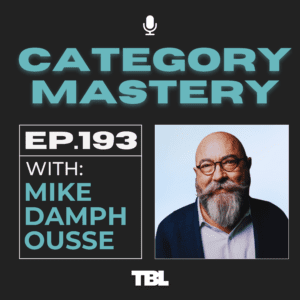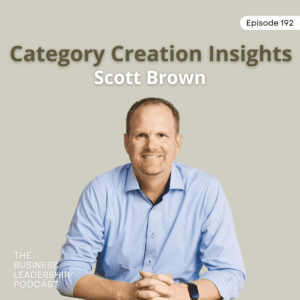

In today’s fast-paced, competitive business environment, differentiating your brand can be a constant uphill battle. Yet, companies that succeed in carving out their own space in the market often find themselves leading their industry to new heights. This week on the Business Leadership Podcast, hosted by Edwin Frondozo, expert Guy Murrel sheds light on category leadership and strategic narrative marketing. With insights from his extensive experience in PR, media relations, and strategic marketing, Guy explains why these elements are crucial for B2B tech firms and how they can boost a company’s standing in the industry.
Defining Category Leadership and Its Importance
To kick things off, Guy Murrel introduces us to category leadership. He argues that simply taking the initiative to define what you believe your category is and positioning yourself as a leader can instantly set you apart from competitors.
According to Guy, category leaders enjoy numerous business benefits: they often raise the most money, get acquired at higher valuations, and even go public. From a marketing standpoint, defining a category allows a company to maintain a consistent and differentiated voice, helping it stand out in a crowded marketplace.
Category Creation vs. Category Leadership
During the podcast, Edwin Frondozo asks Guy to clarify the distinction between category creation and leadership. Guy explains that these concepts are closely related but serve different purposes within a company’s strategic framework. Category creation involves defining a new market segment, while category leadership means aligning your company’s entire messaging framework with this new or existing category.
A well-defined category narrative serves as an organizational “North Star,” offering a cohesive vision for all messaging, whether it’s your company’s mission, values, or product features.
The Role of Strategic Narrative Marketing
Guy then discusses his book, “A Practical Guide to Strategic Narrative Marketing,” which serves as a step-by-step manual for companies looking to define their strategic narrative. One crucial rule Guy highlights is focusing your narrative on the broader industry landscape, trends, and misconceptions—essentially, the world beyond your company and its products.
Creating a strategic narrative involves putting together a category position paper. This paper outlines the industry’s current state, trends, market perceptions, and misperceptions and then articulates how the company defines the category and its core tenets. Notably, the company itself is not mentioned in this paper, which is a complex but essential practice for setting the stage for thought leadership.
Real-World Applications and Examples
Guy shares a compelling example from his career: Rally Software’s journey to category leadership in Agile and Scrum technologies. Rather than focusing solely on their platform’s features, Rally chose to evangelize the Agile methodology. This approach positioned them as a thought leader and led to their acquisition by CA Software following a successful IPO.
Guy also emphasizes the power of self-publishing in today’s world. His book, though short, has served as an effective tool for category leadership, earning recognition from Google and establishing him as an expert in the field.
Measuring Success and the Evolving Landscape of Category Leadership
Edwin asks Guy how companies can measure the success of their category leadership initiatives. Guy highlights that alignment between sales and marketing, improved visibility on Google, and industry adoption of the company’s narrative are critical indicators of success.
Touching on the evolution of category leadership, Guy mentions that technological advancements, like AI, provide new platforms for sharing your strategic narrative. However, he stresses that it remains a human endeavour, requiring creativity and thoughtful communication.
Initial Steps for Aspiring Category Leaders
For business leaders eager to embark on their category leadership journey, Guy advises taking a step back to gain a higher-level perspective. He recommends developing comprehensive content, including position papers and blogs, and launching these assets almost like a product. This integrated approach ensures consistency and helps build a credible and unified brand narrative.
Final Takeaways
In his closing thoughts, Guy underlines the importance of stepping outside your story to think differently. He urges business leaders to educate themselves, challenge their egos, and stay committed to their higher vision.
#### Conclusion
Guy Murrel’s insights offer invaluable advice for any company looking to elevate its market position through category leadership and strategic narrative marketing. By taking these steps, businesses can create a unique, compelling narrative that resonates internally and externally, driving organizational alignment and long-term success.
We hope you found this discussion as enlightening as we did. For more insights, check out Guy Murrel’s book, “A Practical Guide to Strategic Narrative Marketing,” and follow his thought-provoking articles on Forbes. If you found value in this blog post, we encourage you to share it with someone who would benefit from these insights. Until next time, have an outstanding day!
Follow us on Apple Podcasts
If you enjoyed this episode, please share to a friend:
Sign up for our newsletter today and never miss an episode!
You agree to receive updates on new episodes and business leadership-related podcasts. We promise never to spam you!



